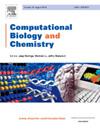The exploring AI-generated pyrazalone derivatives as antifungal agents: Bringing together molecular docking and quantum chemical approaches
IF 2.6
4区 生物学
Q2 BIOLOGY
引用次数: 0
Abstract
Candida albicans, an opportunistic fungal pathogen, is the most prevalent species among the twenty types of Candida responsible for candidiasis in humans. The condition is characterized by symptoms such as itching, redness, skin rashes, fever, septic shock, and infections of mucous membranes. This study explores the potential of pyrazolones and their AI-generated derivatives as effective treatments for these fungal infections. We conducted molecular docking, quantum molecular simulations, drug-likeness study, spectroscopic analysis, electrostatic potential analysis, and topological analysis to evaluate the potential of these derivatives as effective pharmaceuticals alongside molecular dynamics (MD) simulations. Our results show that several of these derivatives bind strongly to the target protein N-myristoyl transferase (NMT), showing a range of binding energies from −9.2 to −9.8 kcal/mol. Further insights revealed that D1 interacts with the NMT protein through two hydrogen-bonding residues HIS-227 and LEU-355, while D2 forms hydrogen bonds with ASP-110 and VAL-108. The ADMET profiling performed using the pkCSM platform identified D1 as a lead candidate, exhibiting optimal intestinal absorption and a maximum total clearance rate, which aligns with the criteria for drug-likeness and therapeutic viability. Additionally, our results showed that these derivatives had stronger binding affinities as compared to the parent compound. Molecular dynamics simulations of selected complexes (D1, D2, D5, and D6) over 120 ns demonstrated their structural stability and dynamic flexibility, as indicated by metrics encompassing root mean square fluctuation (RMSF), root mean square deviation (RMSD), radius of gyration (Rg), and solvent accessible surface area (SASA). The values of RMSD, remaining well within the permissible 4 Å threshold, reflect minimal structural fluctuation, that support the concept of stable complexes during the simulation. Quantum chemical calculations revealed that D1 and D4 had enhanced reactivity, which may improve their ability to interact with biological targets. This study also compared experimental and theoretical approaches to analyzing the properties of the parent compound. Our computational findings demonstrate that derivatives D1 and D2 exhibit strong binding to NMT, a validated antifungal target, with interactions critical for disrupting fungal cell viability. ADMET profiling further identifies D1 as a promising lead with favorable pharmacokinetics, suggesting its potential to inhibit Candida albicans growth in vivo. These results position our derivatives as biologically relevant candidates for experimental validation, advancing the development of novel antifungal therapies.
探索人工智能生成的吡嗪酮衍生物作为抗真菌剂:结合分子对接和量子化学方法
白色念珠菌是一种机会性真菌病原体,是造成人类念珠菌病的20种念珠菌中最常见的一种。该病的特点是瘙痒、发红、皮疹、发热、感染性休克和粘膜感染等症状。本研究探讨了吡唑酮及其人工智能衍生物作为这些真菌感染的有效治疗方法的潜力。我们通过分子对接、量子分子模拟、药物相似性研究、光谱分析、静电势分析和拓扑分析来评估这些衍生物作为有效药物的潜力,并进行分子动力学(MD)模拟。我们的研究结果表明,这些衍生物中的一些与靶蛋白n -肉豆肉酰基转移酶(NMT)结合强烈,结合能在−9.2至−9.8 kcal/mol之间。进一步的研究表明,D1通过两个氢键残基HIS-227和LEU-355与NMT蛋白相互作用,而D2与ASP-110和VAL-108形成氢键。使用pkCSM平台进行的ADMET分析确定D1为主要候选者,表现出最佳的肠道吸收和最大的总清除率,这符合药物相似性和治疗可行性的标准。此外,我们的研究结果表明,与母体化合物相比,这些衍生物具有更强的结合亲和力。选取的配合物(D1, D2, D5和D6)在120 ns以上的分子动力学模拟表明,它们的结构稳定性和动态灵活性,包括均方根波动(RMSF),均方根偏差(RMSD),旋转半径(Rg)和溶剂可及表面积(SASA)。RMSD值保持在允许的4 Å阈值范围内,反映了最小的结构波动,在模拟过程中支持稳定复合物的概念。量子化学计算表明D1和D4具有增强的反应性,这可能提高了它们与生物靶点相互作用的能力。本研究还比较了实验方法和理论方法来分析母体化合物的性质。我们的计算结果表明,衍生物D1和D2与NMT(一种有效的抗真菌靶点)有很强的结合,其相互作用对破坏真菌细胞活力至关重要。ADMET分析进一步确定D1是有希望的先导物,具有良好的药代动力学,表明其在体内有抑制白色念珠菌生长的潜力。这些结果将我们的衍生物定位为实验验证的生物学相关候选物,推动了新型抗真菌疗法的发展。
本文章由计算机程序翻译,如有差异,请以英文原文为准。
求助全文
约1分钟内获得全文
求助全文
来源期刊

Computational Biology and Chemistry
生物-计算机:跨学科应用
CiteScore
6.10
自引率
3.20%
发文量
142
审稿时长
24 days
期刊介绍:
Computational Biology and Chemistry publishes original research papers and review articles in all areas of computational life sciences. High quality research contributions with a major computational component in the areas of nucleic acid and protein sequence research, molecular evolution, molecular genetics (functional genomics and proteomics), theory and practice of either biology-specific or chemical-biology-specific modeling, and structural biology of nucleic acids and proteins are particularly welcome. Exceptionally high quality research work in bioinformatics, systems biology, ecology, computational pharmacology, metabolism, biomedical engineering, epidemiology, and statistical genetics will also be considered.
Given their inherent uncertainty, protein modeling and molecular docking studies should be thoroughly validated. In the absence of experimental results for validation, the use of molecular dynamics simulations along with detailed free energy calculations, for example, should be used as complementary techniques to support the major conclusions. Submissions of premature modeling exercises without additional biological insights will not be considered.
Review articles will generally be commissioned by the editors and should not be submitted to the journal without explicit invitation. However prospective authors are welcome to send a brief (one to three pages) synopsis, which will be evaluated by the editors.
 求助内容:
求助内容: 应助结果提醒方式:
应助结果提醒方式:


